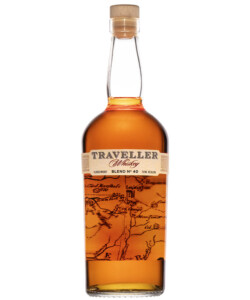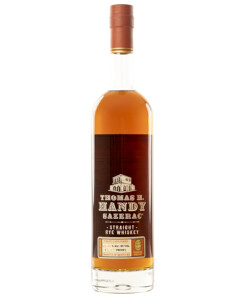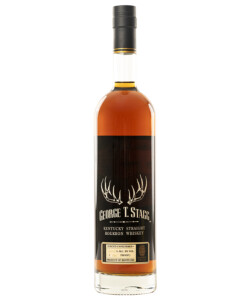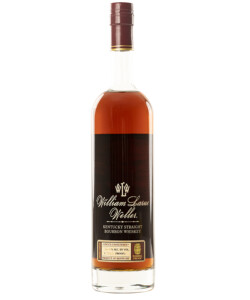Anyone who spends time navigating the sometimes treacherous online bourbon community knows that collectors like to show off. What good is acquiring a rare and expensive bottle if it can’t be the object of both pride and envy? Among the most coveted bottles are George T. Stagg, William Larue Weller, Eagle Rare 17 Year Old, Sazerac 18 Year Old, and Thomas H. Handy Sazerac — better known as the Buffalo Trace Antique Collection.
The Antique Collection (often shortened to BTAC in social media groups and whiskey forums) is the crown jewel of Buffalo Trace’s portfolio. In F. Paul Pacult’s history of Buffalo Trace, “Buffalos, Barrels, & Bourbon,” master distiller Harlen Wheatley describes the collection as the best offering of each of the distillery’s various recipes. They’re essentially limited-edition, elevated versions of many of Buffalo Trace’s core offerings. But there’s more to the Antique Collection than just that.
Uncut and unfiltered, here are 10 things you need to know about the award-winning Buffalo Trace Antique Collection.
See our reviews and ranking of the entire 2023 Buffalo Trace Antique Collection here!
The Antique Collection consists of five different whiskeys.
Three bourbons and two rye whiskeys make up the Buffalo Trace Antique Collection in its current state. Eagle Rare 17 Year Old, George T. Stagg, and William Larue Weller round out the bourbon side of things. The two ryes are Sazerac 18 Year Old and Thomas H. Handy Sazerac. Each bottle is aged and blended with the intent of creating a flavor profile that showcases the best possible expression of each whiskey.
The Antique Collection has grown.
When the Antique Collection launched in 2000, it comprised only three whiskeys: Sazerac 18 Year Old, Eagle Rare 17 Year Old, and a 19-year-old William Larue Weller. At the time of launch, all three whiskeys had a suggested retail price of $49.99.
The five-whiskey lineup evolved into its current form in 2006.
The five whiskeys that currently make up the Antique Collection were released together for the first time in 2006. But between the collection’s launch and the 2006 release, there were some interesting permutations of the lineup. For example, in 2005, there were three different releases of George T. Stagg, with two lots released in the spring and one released in the fall.
The 2021 release had a notable absentee.
In 2021, Buffalo Trace announced that there wouldn’t be a release of the George T. Stagg bourbon. According to a press release from the distillery, the 15-year-old barrels earmarked for that year’s expression didn’t quite meet the standard of quality for the Antique Collection. The bourbon returned to the lineup in 2022 at 138.7 proof, its highest ABV in years.
Every year the whiskeys are slightly different.
Every November, Buffalo Trace releases the Antique Collection to the public. With the Stagg, Weller, and Handy expressions being bottled without filtration and at cask strength, there are subtle variations between each release. These year-to-year distinctions, along with the sheer imbalance between supply and demand, only add to the lineup’s collectability, ramping up the stakes come “hunting season.”
The idea for George T. Stagg came from a Buffalo Trace fan.
In “Buffalos, Barrels & Bourbon,” Buffalo Trace CEO Mark Brown describes how an avid fan of the distillery suggested the concept of a premium, unfiltered, barrel-strength bourbon. There was a bit of skepticism among the marketing team on whether or not a whiskey like this could be successful (times have since changed), but the uncut, unfiltered bourbon was released in 2002. Buffalo Trace named this bourbon, aged between 15 and 19 years, after the distillery’s former owner and namesake George T. Stagg. Over the years it has become a favorite of enthusiasts and critics alike — the 2020 release has an aggregate score of 96 on Whiskey Raiders. The success of George T. Stagg led to the release of Stagg Jr., its younger counterpart. Although not age stated, Stagg Jr. is believed to be matured around nine to 10 years and is unfiltered and cask strength just like its elder sibling.
George T. Stagg and Eagle Rare 17 share the same DNA.
Much like many other major distilleries, Buffalo Trace uses a handful of different recipes to produce all of its whiskeys. Each recipe, known as a mash bill, uses a different proportion of corn, rye, wheat, and malted barley. Each grain imparts different flavors to each whiskey. George T. Stagg and Eagle Rare 17 are made using mash bill #1, the same base recipe as Buffalo Trace and Eagle Rare’s 10-year expression. The difference in flavor comes from variations in filtration, dilution, and barrel aging (length of maturation, as well as position within Buffalo Trace’s rickhouses).
William Larue Weller has the same mash bill as Pappy Van Winkle.
Beyond its status as a unicorn bottle, the Pappy Van Winkle line of whiskeys is beloved for its smooth, rich profile. The soft texture and flavor come from the use of wheat as the secondary grain in the mash bill. Buffalo Trace uses just one mash bill to make all of its so-called “wheated” bourbons. That means the entire Weller line is made from the same juice as Pappy — they’re just aged and blended differently. The William Larue Weller expression in the Antique Collection is the only cask strength and unfiltered bourbon in the line.
Thomas H. Handy Sazerac Rye honors an oft-overlooked figure in bartending history.
The history of the Sazerac cocktail is a bit hazy but one thing is for certain — it’s inextricably linked to New Orleans. This classic rye-based drink wasn’t always how we know it today — the recipe originally called for Cognac. After vineyard pest (and American transplant) phylloxera wiped out a significant portion of French vineyards between the 1850s and 1870s, Cognac became far more expensive and scarce. During that time, Thomas H. Handy was the owner of the historic New Orleans coffee house, bar, and lounge known as the Sazerac House. Due to the shortages, he oversaw the decision to swap Cognac out for rye — an innovation that now has his name immortalized on a bottle of uncut, unfiltered, rye whiskey. In 1992, the George T. Stagg distillery (renamed to Buffalo Trace in 1999) was purchased by the New Orleans- headquartered Sazerac Company, which is a direct descendant of the Sazerac House.
Good luck collecting them all.
Due to the limited number of bottles produced every year, the Antique Collection isn’t easy to get a hold of. Since 2018, Buffalo Trace has kept the number of bottles produced a closely guarded secret. The entire collection is allocated, which means that liquor stores, bars, and restaurants can only acquire a small amount at a time. Each bottle in the collection is sold individually for a suggested retail price of $99, but finding a bottle at that price is unlikely. Due to the limited supply, and increased demand for premium bourbon since the collection’s launch, it’s not uncommon to see retailers price these bottles 10 or 20 times MSRP. For example, Wine-Searcher currently has the 2022 William Larue Weller listed at an average price of $2,372 and the Thomas H. Handy rye at $1,010.




